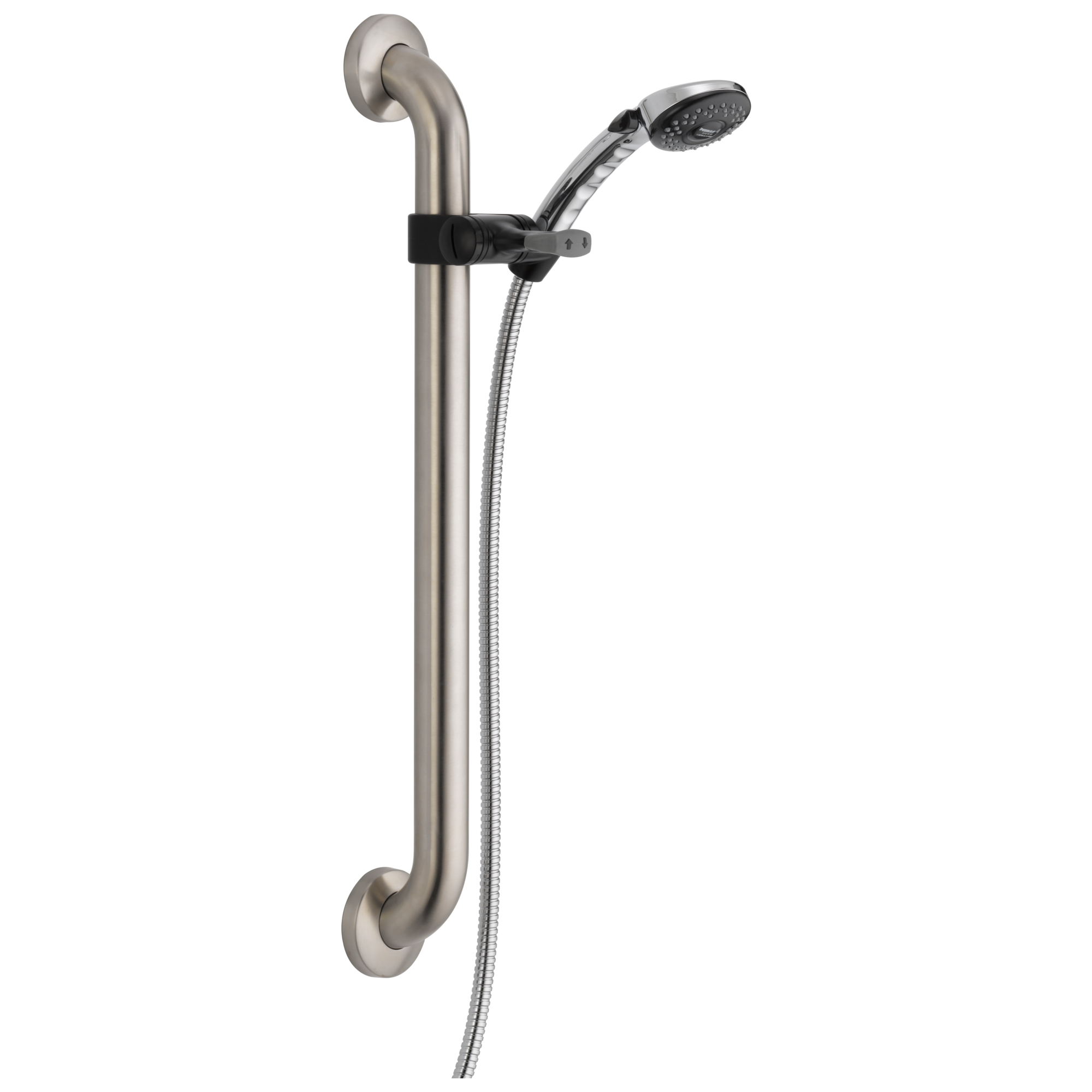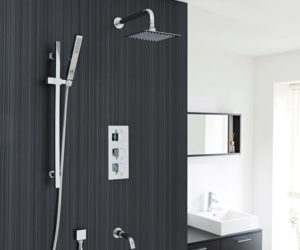Basic Tub Shower Plumbing Manual
Bathtub spouts may need to be replaced for a few common reasons:. the diverter can get worn out so that it no longer blocks the water flow to divert the water to the showerhead. the threads that connect the spout to the pipe can corrode or crack allowing water to trickle along the pipe and drip inside the wall causing damage. the finish on the spout can corrode or flake off or the finish may just need updating if you decide to change any of the other fixtures in the bathroom Replacement is usually the best option for each of those issues and it is fairly simple.
Before replacing your tub spout, you will need to determine which type of tub spout you have and what kind you will need to replace it. There are two basic types of tub spouts: diverter style that allows you to send the flow of the water to either the tub spout or the shower with a diverter right on the tub spout and non-diverter style that flows only from the tub spout into the tub. Within those two types are different attachment options: slip-on with setscrew or the threaded type. How To Determine What Type of Tub Spout You Already Have. Grab a flashlight and look beneath the tub spout while it still attached to the wall. If you can see a tiny screw on the underside of the spout, you have a slip-on tub spout with a set screw. If there is no set screw, you have a threaded tub spout.

You can remove your tub spout by twisting it counter-clockwise to see how your existing spout is threaded, if desired, but it is recommended you leave the spout on if you might need to use the tub before your new spout arrives. Slip-On Spouts A slip-on style bathtub spout will have a setscrew, which is a small screw located on the bottom of the tub spout.

The slip-fit tub spout is designed to slip onto a 1/2' without the use of any threads. The end of the copper that will be used must be free of burrs or rough edges, when using this type of spout. A front end threaded tub spout can be used with either a tub valve without a shower, or with a tub valve that has a shower diverter built into the tub valve. The wall end spout (also called 'rear-threaded' spout) offers added convenience because it can be connected to a tub spout stub-out nipple (1/2' or 3/4') at the wall end of the spout with a Celcon bushing. Rear threaded spouts can be used for either new or remodeling construction. Several models are available with a conventional diverter near the wall, or with a specialized that allow for the use of hand-held showers or riser tubs for exposed showers.
Basic Tub Shower Plumbing Manual Free
A telescoping spout is also a type of threaded bathtub spout which provides flexibility for many installation applications by allowing an adjustment, usually up to 1', to be made for the finished wall. The telescoping spout attaches to either a 1/2' or 3/4' nipple with a Celcon bushing. Tub Spouts with Brass Adapters - Threaded or Slip-on.
Some tub spouts may look like a threaded spout but in fact thread onto a brass adapter that is installed onto the pipe. There are two types of brass adapters, either a 1/2' IPS (iron pipe size) threaded adapter or a 1/2' nominal inside diameter ( CTS) slip-on adapter, depending on the type of tub spout originally purchased. Some brass adapters are made with 1/2' IPS (iron pipe size) threaded adapter with a sweat 1/2' nominal inside diameter ( CTS) slip-on fitting beyond the female threads. The 1/2' IPS threaded adapter can be threaded onto galvanized, brass, stainless steel and other pipes with NPT (National Pipe Thread Taper) threads. These particular adapters can also be used on copper tubing by sweating the adapter onto the copper pipe. The copper pipe is pushed into the adpater, through the threads, where a smooth snug slip fitting is located. The 1/2' nominal inside diameter ( CTS) slip-on adapter slides over the copper tubing and is secured to the copper pipe by tightening the set screw, or can be sweat/soldered to the pipe.

Basic Tub Shower Plumbing Manual Pressure
Once the brass adapter is secured to the pipe the tub spout is threaded onto the adapter. The tub spout itself has a plastic inner core with coarse threads to match the brass adapter male threads, allowing the tub spout to have room for adjustment forward or backwards determined by the position of the adapter on the pipe.
Bathtub Spouts Removal and Installation Help. Special Note: If your piping is copper and you can not find a set screw and you can see the copper pipe is pushed inside the brass adapter, beyond any internal female threads the brass adapter may have, then the brass adapter was soldered onto the copper tubing. Some brass adapters have 1/2' female pipe threads and are designed with a sweat fitting past the threads. A torch will be needed to heat the brass adapter to loosen the solder. In this situation you will need to use a pair of insulated long handled pliers to hold the brass adapter while you are heating it in order to remove it without burning your hand.
Have a pan of cold water ready to put the brass adapter into in order to cool it off. Step 3: Hand tighten adapter onto pipe nipple. Finish tightening the adapter with a standard pipe wrench, approximately 3 turns, until snug.
Do not over tighten. Take caution to not damage the O-ring or the o-ring groove. The back of the brass adapter (male outside thread portion) must not project more than 1' from the finished wall surface. Note: If your pipe nipple projects out the maximum of 1-1/4' as described in step 1, the brass adapter will thread on approximately 1/2' leaving the back of the brass adapter less than a 1' projection from the wall.
Location of Shower Faucet and Head If placing the faucet in a combination tub and shower unit the faucet is generally placed low, 12 to 18 inches above the rim of the bath tub. The tub spout will generally be located 4 inches above the rim of the tub.
In a shower only unit, the faucet is placed higher at 48 inches off the floor. The shower head normally is located 72 to 80 inches above the finished floor. If the homeowner prefers an adjustment in heights, then the shower head can be roughed-in higher or lower. The valve, spout and shower head should be centered side to side in the interior of the shower. Size of Water Supply Pipes Nearly all tub and shower faucets require a one-half inch diameter water supply pipe on both the hot and cold supplies. If using PEX pipe, an extremely flexible, easy to use and popular type of plastic pipe, you should note a caution on sizing.
PEX has a smaller interior diameter than copper pipe, so if the shower is on the second floor, it would be prudent to install three-quarter inch PEX to a point near the shower before reducing to one-half inch and making the connection to the faucet. This larger diameter will help provide adequate water flow at greater distances from the water source. Location of Drain If the shower unit is being installed where there will be access underneath after the shower unit is in place, such as over a basement with an open ceiling or a crawlspace, then the shower unit can be installed in place and the drain connected afterward. If the shower unit will be set in a spot without underneath access, such as in a concrete floor or an upper floor with a finished ceiling that won't be opened, then the drain will need to roughed-in before setting the unit in place. There are many different designs of showers. To determine the rough-in specs for a shower drain it is necessary to check the manufacturer's installation instructions for that particular unit.
